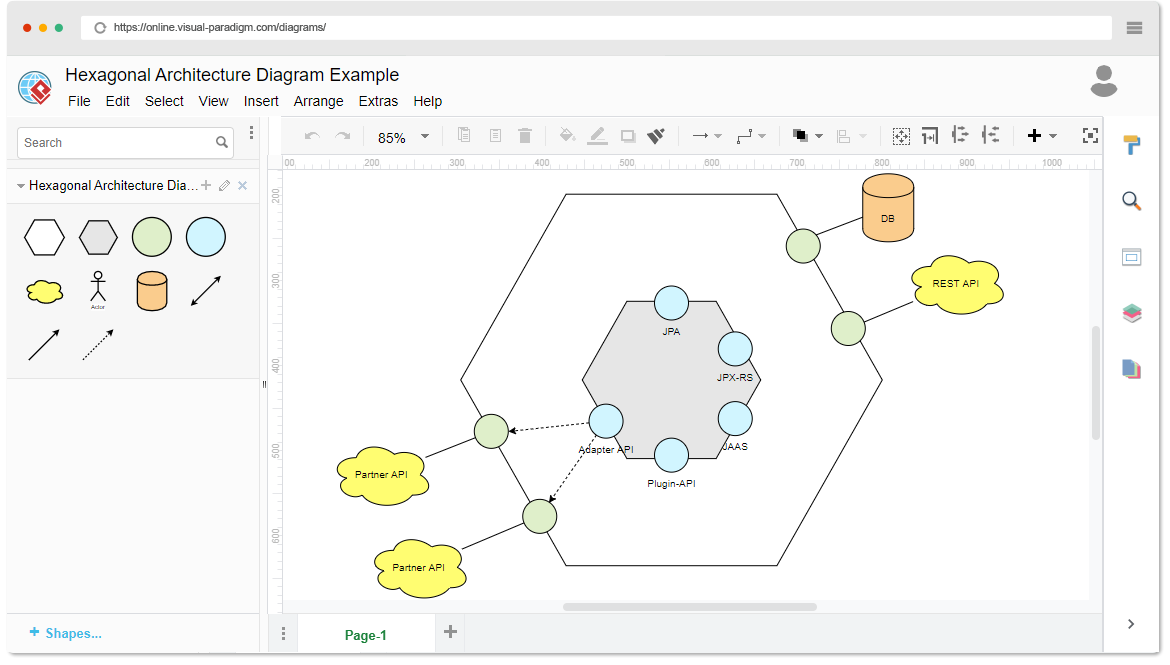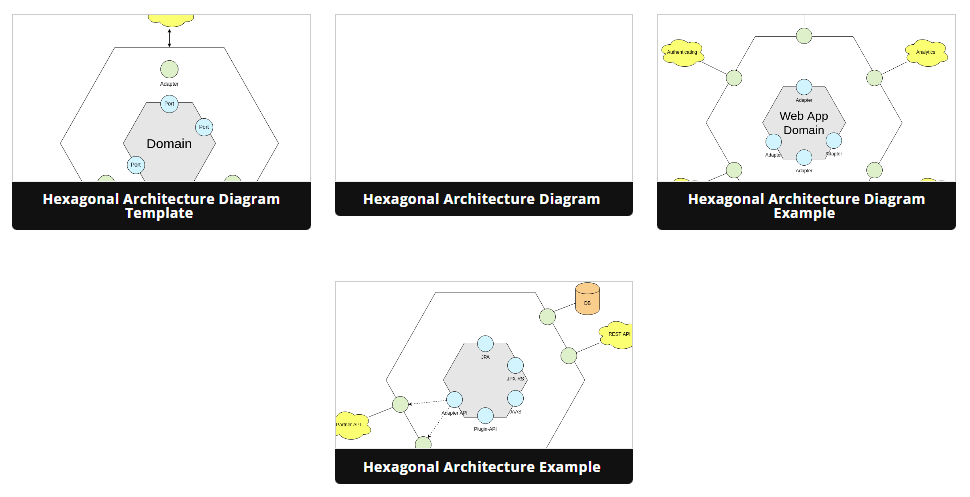Beginner’s Guide to Hexagonal Architecture Diagram (Data Flow)
Introduction
Hexagonal Architecture, also known as Ports and Adapters Architecture, is a powerful architectural pattern used in software design. It is designed to create software systems with loosely coupled components that can easily interact with their environment through ports and adapters. This approach promotes flexibility, testability, and maintainability of software systems. In this beginner’s guide, we’ll introduce you to Hexagonal Architecture through simple explanations and examples, focusing on data flow.

Understanding the Basics
Origin
The Hexagonal Architecture was introduced by Alistair Cockburn in 2005 as a response to common issues in object-oriented software design. It aims to eliminate problems like tight dependencies between different parts of the system and mixing business logic with user interface code.
Hexagonal Representation
The name “hexagonal” architecture refers to the graphical representation of application components as hexagonal cells. It doesn’t imply that there must be precisely six ports or borders; instead, it provides a conceptual framework to represent the various interfaces required between a component and the external world.
Key Principles
Component Division
The Hexagonal Architecture divides a software system into loosely coupled and interchangeable components. These components include the application core, database, user interface, test scripts, and interfaces with other systems. This approach differs from traditional layered architecture.
Ports and Protocols
Each component communicates with others through exposed “ports,” which define how communication should occur. These ports adhere to specific protocols based on their purpose. These ports and protocols form an abstract API that can be implemented using various technical means, such as method invocations, remote procedure calls, or web services.
Port Granularity
The granularity of ports is flexible. A component can have:
- A single port for simple service consumption.
- Ports for event sources (e.g., user interface and automated feeding).
- Ports for notifications (outgoing notifications).
- Ports for database interaction (for interfacing with a database management system).
- Ports for administration (for component control).
- In some cases, there might be different ports for every use case, if necessary.
Adapters
Adapters act as intermediaries between components and the outside world. They bridge the gap between external systems and the ports representing the internal requirements of an application component. Multiple adapters can be associated with a single port. For instance, data can be input by a user through a graphical user interface (GUI), a command-line interface, an automated data source, or test scripts.
Learning by Example with Visual Paradigm Online
To gain a deeper understanding of Hexagonal Architecture and create Hexagonal Architecture diagrams that illustrate data flow, you can use Visual Paradigm Online‘s pre-made templates. Here’s how:

- Visit Visual Paradigm Online: Go to the Visual Paradigm Online website and create an account if you don’t have one.
- Select a Hexagonal Architecture Template: Explore the template library and select a Hexagonal Architecture diagram template that suits your project. These templates often come with pre-defined components, ports, and adapters.
- Customize Your Diagram: Modify the template to represent your specific software system. Add or remove components, adjust the number and types of ports, and define protocols for communication.
- Connect Ports and Adapters: Use arrows or connectors to illustrate the flow of data between ports and adapters. This helps you visualize how information moves within your system.
- Document Your Design: Add comments or descriptions to your diagram to explain the purpose of each component, port, and adapter. This documentation is valuable for your team and future reference.
- Collaborate and Share: Visual Paradigm Online allows collaboration with your team members. You can also share your diagrams with stakeholders for feedback and review.
- Iterate and Refine: As your software design evolves, you can easily iterate on your Hexagonal Architecture diagrams to reflect any changes in your system’s structure and data flow.
By learning through examples and using tools like Visual Paradigm Online, you’ll develop a practical understanding of Hexagonal Architecture and its benefits for designing robust and adaptable software systems.

